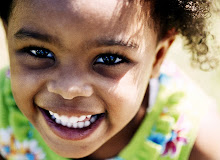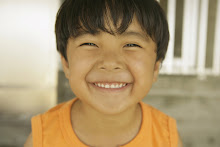
This is the next post in a series based on the Early Childhood Indicators of Progress: Minnesota’s Early Learning Standards. These Indicators are what can be expected of children aged 3 to 5.
This post we’ll focus on approaches to learning, the second of the six domains. See my post on the first domain, Social and Emotional Development.
This domain is about both the styles and attitudes of gaining information as well as promoting a positive disposition toward exploring new things. The five components of this domain are curiosity, risk-taking, imagination and invention, persistence, and reflection and interpretation. We’ll take a little time with each component and share what families and caregivers can do to support this domain. The indicators for each component are taken directly from the ECIP manual.
Curiosity
Preschool-aged children often show a lot of curiosity. Children are developing normally in this domain when they:
- Show eagerness and a sense of wonder as a learner
- Show interest in discovering and learning new things
Families can encourage curiosity by encouraging children’s interests and providing a variety of learning environments and experiences both inside the home and on family outings.
Teachers and caregivers support this domain when they provide a variety of opportunities for learning and approaches to teaching that appeal to the full range of children’s abilities and learning styles.
Risk-taking
A healthy amount of risk-taking is an important part of exploring and learning new things. Children are progressing in this domain when they:
1. Choose new as wells as a variety of familiar activities
2. Use a variety of strategies to solve problems
Families can assist children in risk-taking by encouraging them to creatively solve problems and to try out new things. Parents can also intentionally introduce everyday objects including toys that can be used in more than one way. (see Life Bags) and monitoring children’s use of media such as computers/internet, television and movies.
Teachers and caregivers can provide opportunities for risk-taking by creating environments that give an appropriate amount of stimulation for children to try new activities while recognizing children’s individual differences and interests.
Imagination and Invention
Discovering new things takes a bit of imagination. Children demonstrate imagination when they:
1. Approach tasks and experiences with flexibility, imagination, and inventiveness
2. Use new ways or novel strategies to solve problems or explore objects
3. Try out various pretend roles in play or with make-believe objects
Families support children in this domain by providing a variety of activities and materials that are both new and familiar for children to explore without fear of making mistakes as well as encouraging pretend play.
Teachers and caregivers can encourage children in imagination and invention by giving children opportunities to experiment and explore without fear of making mistakes; providing tasks where the goal is to produce different results or strategies rather than right or wrong; encourage children when they demonstrate flexibility and inventiveness.
Persistence
One can only learn something when they take the time to truly understand it. Children demonstrate persistence when they:
1. Work at a task despite distractions or interruptions
2. Seek and/or accept help or information when needed
3. Demonstrate ability to complete a task or stay engage in an experience
Families can assist children in developing persistence by allowing space and time for children to give attention to age-appropriate tasks without being interrupted and responding to children’s requests for help without being intrusive.
Teachers and caregivers support children in this domain when they set up a learning environment to limit distractions and provide enough time for children to sustain their attention and engage fully in activities.
Reflection and Interpretation
Taking time to reflect on new experiences and information is key to gaining understanding. Children are developing normally in this component when they:
1. Think about events and experiences and apply this knowledge to new situations
2. Generate ideas, suggestions and/or make predictions
Families can create opportunities for children to develop their reflection by encouraging children to share their thoughts and ideas as well as asking questions for children to think about what they have seen, heard and done. Parents can also model thinking “out loud” and involving children in planning family activities.
Teacher and caregivers can facilitate children’s development in this component by allowing time for children to process and express thoughts and feelings about experiences through such methods as discussion, art, journaling or conversation and help children to think and talk about what they are learning.
To support all aspects of children’s approaches to learning, community members can provide a variety of activities and safe environments appropriate for families with young children such as libraries, parks, festivals and fairs that give young children opportunities to explore as well as giving opportunities for families to participate in community problem solving processes.
And policy makers can encourage cooperation and collaboration across systems and ensure that environments with activities for families with young children are affordable and accessible.
What do you think? How do you encourage children in their various approaches to learning?
Check back next time as we explore language and literacy development.






No comments:
Post a Comment